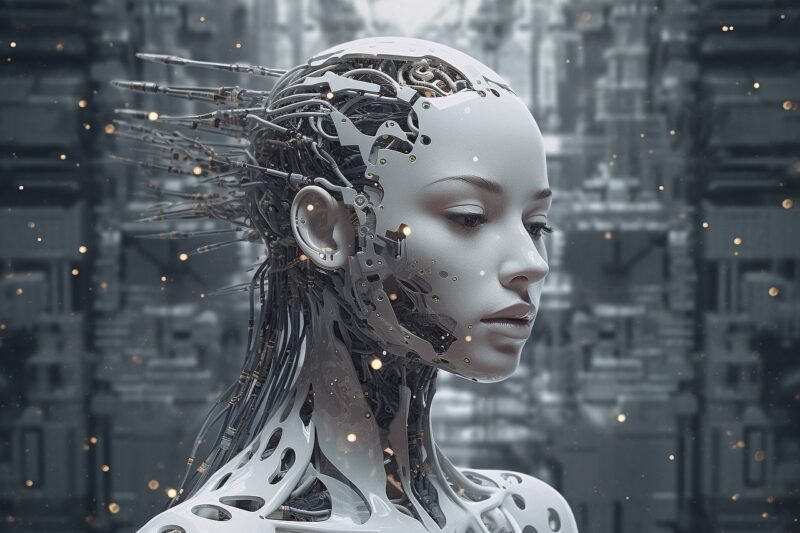Artificial Intelligence 101: A Beginner’s Guide to Understanding AI Concepts and Applications
November 11, 2024

Artificial Intelligence (AI) has rapidly transformed various aspects of our daily lives, from virtual assistants like Siri and Alexa to personalized content recommendations on social media. As AI continues to evolve, understanding its fundamental concepts and applications becomes increasingly vital. This beginner’s guide aims to unravel the complexities of AI, providing readers with essential knowledge to navigate this revolutionary technology.
1. What is Artificial Intelligence?
Artificial Intelligence refers to the simulation of human intelligence in machines that are programmed to think and learn like humans. The machines can perform tasks such as problem-solving, recognizing patterns, understanding languages, and making decisions. While AI encompasses a wide array of technologies, its capabilities can be broadly categorized into two types: narrow AI and general AI.
- Narrow AI: Also known as weak AI, this type specializes in a specific task. Examples include image recognition systems, voice assistants, and recommendation algorithms. Narrow AI can outperform humans in its specific domain but lacks generalized perceptive and cognitive abilities.
- General AI: Often referred to as strong AI or artificial general intelligence (AGI), this is a theoretical form of AI that possesses the ability to understand, learn, and apply intelligence across a variety of tasks, just as a human can. Currently, AGI remains a concept rather than a reality.
Understanding these distinctions sets the foundation for further exploration into AI technologies and their implications.
2. Key Concepts in Artificial Intelligence
To appreciate the power of AI, it’s essential to familiarize yourself with several key concepts:
- Machine Learning: A subset of AI that enables machines to learn from data without explicit programming. The more data the machine processes, the better it becomes at making predictions. Common techniques include supervised learning, unsupervised learning, and reinforcement learning.
- Deep Learning: A specialized form of machine learning that utilizes neural networks with many layers (hence “deep”) to analyze various forms of data. Deep learning is instrumental in achieving advancements in image and speech recognition.
- Natural Language Processing (NLP): This branch of AI focuses on the interaction between computers and humans through language. NLP enables machines to understand, interpret, and respond to human language, powering technologies such as chatbots, language translation, and sentiment analysis.
- Computer Vision: This technology enables machines to interpret and understand visual information from the world. Its applications range from facial recognition systems to autonomous vehicles, where it processes images in real-time to make immediate decisions.
These concepts play significant roles in the development of AI systems that are becoming increasingly integrated into everyday life.
3. Applications of Artificial Intelligence
AI has a multitude of applications across various industries, driving efficiency, innovation, and better decision-making. Here are some notable examples:
- Healthcare: AI is used for diagnostics, predictive analytics, and personalized medicine. Algorithms analyze medical images to detect diseases early, while machine learning models predict patient outcomes based on historical data.
- Finance: Financial institutions leverage AI for fraud detection, risk assessment, and algorithmic trading. AI systems can analyze vast amounts of data to identify patterns and predict market trends more accurately than human analysts.
- Retail: AI enhances customer experience through personalized recommendations and chatbots. Retailers use AI algorithms to analyze purchase histories, helping them predict what customers want and when they are likely to shop.
- Transportation: AI technologies power self-driving cars and logistics optimization. Companies like Tesla and Waymo are using AI for real-time navigation and decision-making processes on the road, while logistics firms utilize AI for route optimization, improving delivery efficiency.
- Entertainment: Streaming services such as Netflix and Spotify employ AI to recommend content based on user preferences. Machine learning algorithms analyze viewing patterns to suggest relevant movies and shows, enhancing user engagement.
These applications illustrate AI’s transformative impact across sectors, showcasing its ability to solve complex problems and enhance experiences.
4. Benefits and Challenges of AI
As with any technological advancement, AI offers numerous benefits and presents several challenges that society must address:
Benefits:
- Efficiency: AI systems can process data and automate tasks faster than humans, leading to increased productivity and reduced operational costs.
- Improved Decision-Making: AI analyzes massive datasets to provide actionable insights, enabling better strategic decisions across businesses and industries.
- Enhanced Creativity: In fields like art and music, AI aids creators by providing inspiration and unique approaches, pushing the boundaries of traditional creativity.
Challenges:
- Ethical Concerns: The use of AI raises ethical questions regarding privacy, job displacement, and algorithmic bias. Society must navigate these concerns to ensure that AI technologies benefit all.
- Dependence on Data Quality: The effectiveness of AI systems is heavily reliant on the quality of data. Poor data can result in inaccurate predictions and flawed decisions.
- Security Risks: As AI technologies evolve, so do the risks associated with security. AI can be exploited for malicious purposes, such as creating deepfakes or breaching sensitive information.
Addressing these challenges is vital for maximizing AI’s potential while safeguarding societal interests.
5. The Future of Artificial Intelligence
The future of AI is promising, marked by rapid advancements and growing integration across sectors. Continued research and innovation will drive developments such as:
- Human-AI Collaboration: We can expect to see more collaborative systems where humans and AI work in tandem, enhancing the creativity and productivity of both parties.
- Explainable AI: There will be a focus on making AI systems more transparent, enabling users to understand how decisions are made, thus improving trust and acceptance.
- Regulations and Standards: Policymakers will likely establish regulations to govern the ethical use of AI, addressing concerns about bias and privacy while ensuring innovation.
As AI continues to advance, its capacity to shape industries and influence daily life will expand. Embracing these changes while remaining vigilant about their implications is essential.
Conclusion
Artificial Intelligence is no longer a concept of the future but a present reality shaping our world. Understanding its fundamental concepts and applications empowers individuals to better navigate and participate in this transformative journey. By being aware of the benefits and challenges brought by AI, individuals and organizations can strategically harness its potential for positive change while addressing ethical considerations. As you explore the expansive landscape of AI, you’ll find countless opportunities and innovations awaiting in this revolutionary field.
Embrace the journey of learning about AI, and prepare to be inspired by the endless possibilities that lie ahead.






